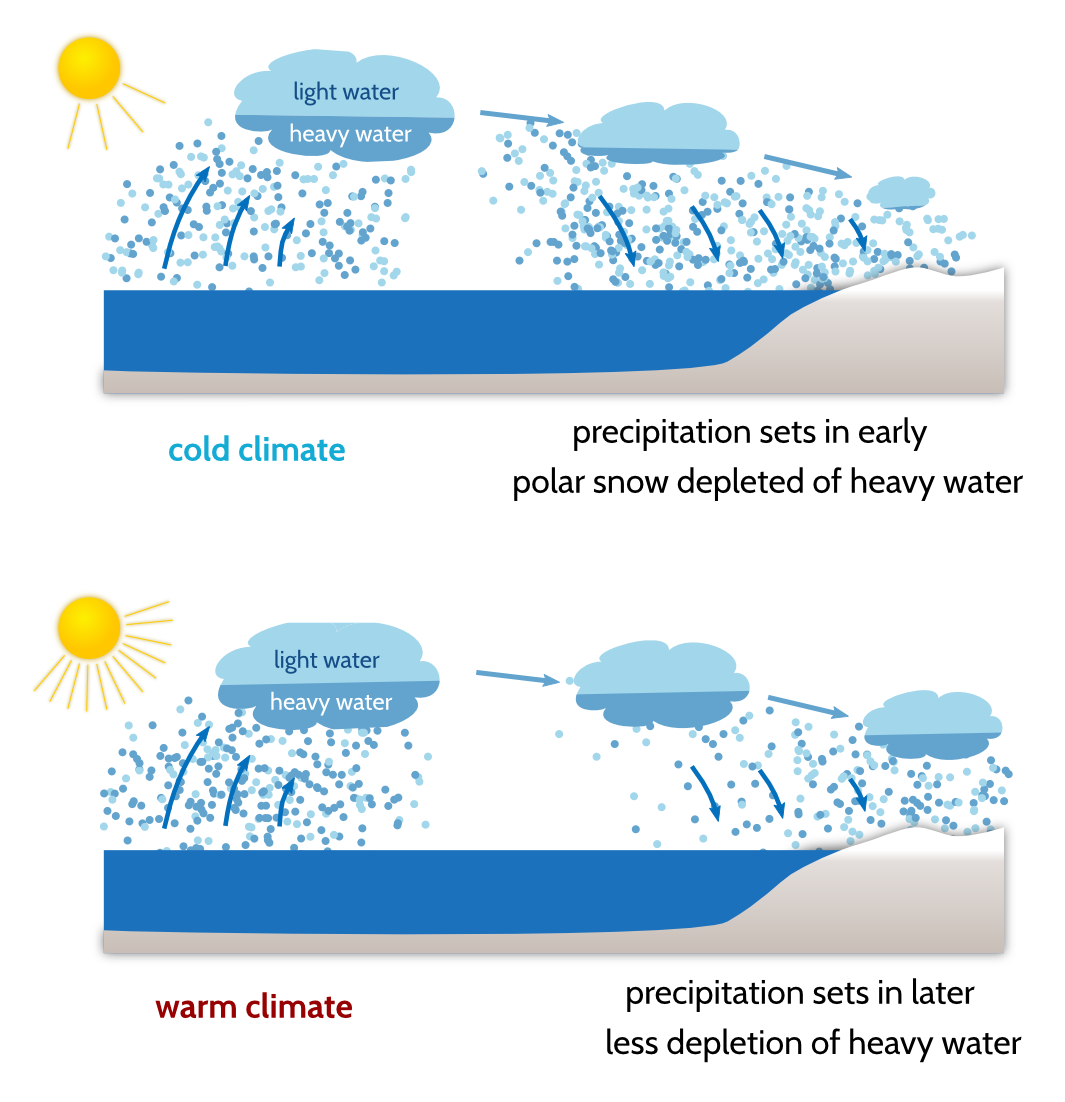Evidence for the Earth's Climate History
A glance at the recent history of the earth's climate shows that the mean surface temparature has been relatively constant. During the last 40 million years the global mean temperature has been varying only by some degrees Kelvin.[1]
Temperature Recording: Isotope Fractionation
How can we know this that precisely? One of the most important indicators of how the global mean temperature developed over time is the concentration of heavy water in antarctic ice sheets.
Heavy Water
The expressionheavy water is used for water molecules that contain either a hydrogen atom or an oxygen atom with increased neutron number (the latter is less common referred to as heavy water but for the sake of simplicity both types will be addressed by that in the following). The resulting molecule is therefore slightly heavier than ordinary water (hence the term heavy water).
A key feature of heavy water is the following experimental fact: In water vapour that conatins a mixture of both normal and heavy water the heavy water is more likely to condensate. Thus, when moist air starts to form precipitation, the heavy water is removed from the air to a greater extent than the normal water and the remaining air is depleted in heavy water.

But how is the heavy water concentration in the antarctic ice sheet influenced by the global mean temperature? The second ingredient we need is a fundamental transport mechanism in the earth's atmosphere: Close to the equator large amounts of ocean water evaporate, rise to higher altitudes and move poleward. Thereby the air cooles down significantly and looses its ability of storing humidity and precipitation sets in.
Now the important point is that in a colder climate precipitation starts earlier on the way to the poles. From above we know that the more precipitation the more the decrease in the heavy water concentration. Thus, when the air (in a cold climate) reaches the pole and forms snow, it contains comparably little heavy water. In contrast to this, during warmer times precipitation sets in later and the concentration of heavy water has not yet decreased that much in the snow falling in the antarctic regions.
References
| [1] | Earth - Evolution of a habitable world Cambridge University Press 2013 (p. 238) |